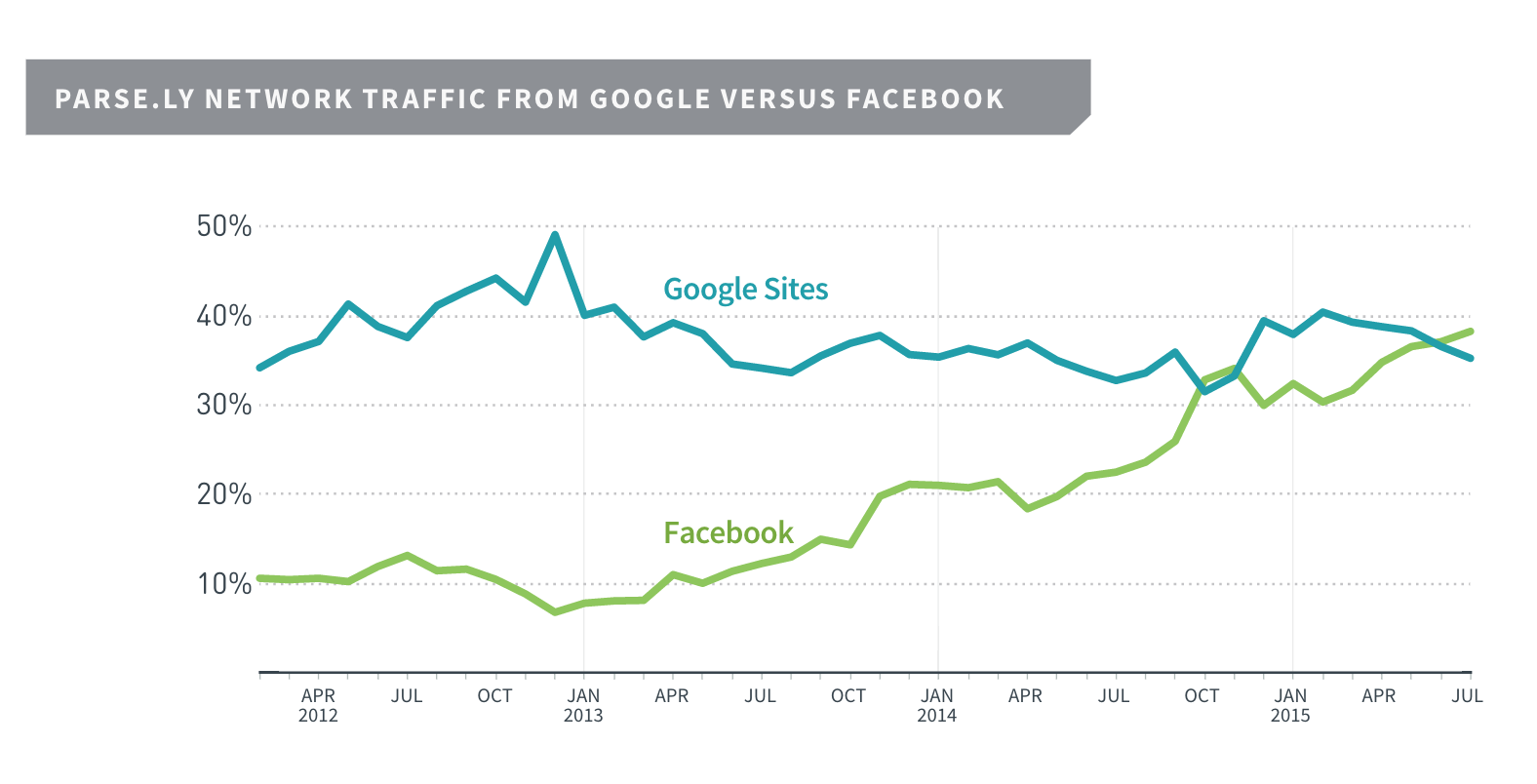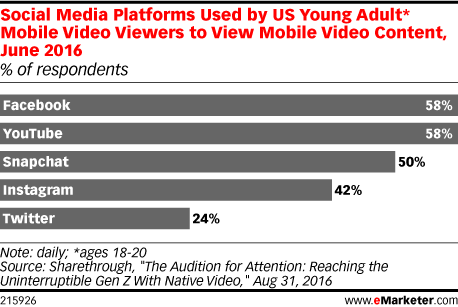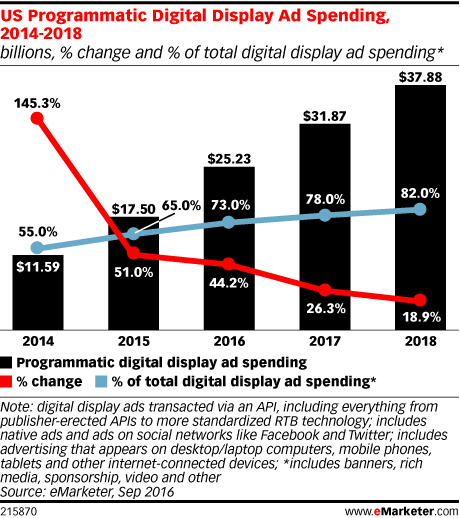The advertising game is an ever-changing one and it’s all about creating brand awareness. But consumers aren’t only sitting around their televisions like they used to do. They are constantly moving, talking, texting and communicating; plus sharing information with one another faster than ever on the internet.
As an advertiser, it’s your job to attract customers and generate awareness for your business. Here are some solid facts that you need to know about social media marketing.
1. Social media has overtaken search as the primary vehicle for digital discovery
Search engines were once the premiere way in which internet users discovered new things including products and services, but times have changed. According to the technology company Parse.ly, social media has overtaken search as the primary means with which internet users discover new content. Facebook is not only taking traffic from publishers, but also from Google. In 2015, Facebook was responsible for 39 percent of referrals to publishers, compared to 35 percent from Google. Social marketing, while still evolving, is here to stay.

2. LinkedIn is the most used tool by B2B marketers to distribute content
A total of 94 percent of B2B marketers uses LinkedIn as part of their content strategy according to the Statistical Fact Book 2016 report from the Direct Marketing Association (DMA). Other popular platforms include Twitter (87%), Facebook (84%), YouTube (74%) and Google+ (62%). Another study says that 66 percent of B2B marketers rank LinkedIn as the most effective social media platform for their business. Other effective platforms were Twitter (55%), YouTube (51%), SlideShare (41%) and Facebook (30%).
3. Social media now plays almost as large a role in purchasing decisions as does TV
The rise of social influence on buying decisions comes as TV’s influence on consumer buying behavior shrinks. TV still plays a significant role in the consumer purchasing decision, but its once-held dominance has shrunk significantly since social media has risen in popularity. A study from the research company CivicScience reveals that 57 percent of consumers say they’re influenced to think more highly of a particular business after seeing positive comments or praise online.
4. More than half of US young adults watch mobile videos on YouTube and Facebook
According to a poll conducted by native advertising software provider Sharethrough, teens are not the only ones turning to YouTube and Facebook to consume video content. A total of 58 percent of young adults ages 18 to 20 watches mobile video on these platforms too. Snapchat comes in third place with 50 percent of respondents saying that they use it as a platform for viewing mobile content.

5. The majority of B2B marketers currently use content marketing as part of their marketing strategy, yet only 32 percent have a documented strategy
According to the Content Marketing Institute, 88 percent of B2B marketers currently use content as part of their marketing strategy. While the rise of content marketing among B2B marketers is encouraging, the lack of documented strategies demonstrates that there are still significant steps that need to be taken by businesses to best realize the potential of what content marketing can do for them.
6. 56 percent of online adults use two or more social media sites
Targeting one platform is better than none, but optimizing your campaign for several platforms gives you a better shot of actually reaching these coveted users. A social media study conducted by Pew Research Centerhighlights that although most of online adults uses two or more social media sites, Facebook remains as the most popular platform. Among people who only use one social media platform, 88 percent indicate that Facebook is the one site that they use.
7. Programmatic ad spend in the US will grow faster than all other digital media channels in 2017.
Programmatic media buying is the algorithmic purchase and sale of advertising space in real time. This process is commonly used in social media advertising, a segment that has been growing at a rapid pace. According to a report from Zenith programmatic advertising will grow 31 percent in 2017, faster than all other digital media channels. The report finds that programmatic will become the principal method of trading digital display in 2016 (accounting for 51% of expenditure) and will rise to 58% of expenditure in 2017. According to a report from eMarketer, this means ad spend will grow from $25.2 billion in 2016 to $37.9 billion in 2018.

8. 64 percent of sales professionals have closed at least one deal as a direct result of using social media – and this number is growing
This seems crazy, right? After all, many sales executives still see social media as a colossal waste of time and something that’s near impossible to value on a sales quota. But a study done by the technology company KiteDesk shows that a relationship exists with 74 percent of salespeople who beat their sales quota in 2014 thought of themselves as having an excellent understanding of social media. It’s not too crazy if you think about it. These salespeople are using social media for prospecting and nurturing relationships as well as closing deals. Social has become a way of keeping in constant contact with one another, and it appears this applies to business as well.
9. Visual content is 40 times more likely to be shared on social media than other content
A striking image is going to draw the eye a lot more quickly than an impressive paragraph of text says research from the social media publishing company Buffer Social. Despite the numerous ways that social media has changed the marketing game, one thing remains the same: consumers are drawn to visuals.
10. Digital video ads are more effective in the morning
A study from the cross-platform video advertising firm YuMe reveals that online video advertising is more impactful between 3 a.m. and 12 p.m. The peak for ad receptiveness was registered by 5 a.m. The study measured receptiveness to ads and the effectiveness of branding efforts on consumers. It is important to note that this trend is seen across all age groups including Millennials, Generation X, and baby boomers.

11. 90 percent of Americans ages 18 to 29 use social media
What’s interesting about this information is the additional data surrounding it. We all knew that young people used social media, though not to this large extent. But there is another group on the rise. People 65 and older have tripled their social media usage from 2010, when only a paltry 11 percent used social media according to Pew Research Center. In 2015, 35 percent of people 65 and older reported using social media.
12. Facebook influenced 52 percent of online and offline purchases in 2015
This is up from 36 percent in 2014, according to the DigitasLBi Connected Commerce report. Why the rise? Because of the personalized quality of social media. The real influence of social media in marketing and advertising is that it is a very easy, connected network of word-of-mouth endorsements that are not bound by geographic barriers. The success or failure of a brand can become viral if a tweet or status update is shared enough. Besides, social media advertising is based on data which results in better targeting options to reach exactly the desired audience.
13. By 2019, mobile advertising will represent 72 percent of all US digital ad spending.
According to eMarketer, this rise in ad spending is enough to surpass desktop ad spending, putting the mobile platform at the top of the advertising investments in the United States. This shift is being driven mainly by consumer demand as customers spend an average of 2 hours, 51 minutes with mobile devices each day.

14. Facebook has 8 million daily video views
Facebook’s strategy around videos including tools to auto-play videos and promote live-streaming have paid-off. The company now registers an impressive number of 8 million daily video views. On a recent investor’s call, Mark Zuckerberg said this is the result of a fundamental improvement in networks which allows more people to have a good experience watching a video.
15. Social media is the marketing channel that offers the greatest opportunities for brands
Given the sheer versatility of digital advertising coupled with the diverse swath of demographics that can be reached, social media has become the marketing channel with the greatest number of opportunities according to the Statistical Fact Book 2016 report from the Direct Marketing Association (DMA). Not only can marketers reach the much-coveted millennial demographic, but they can also reach the parents of millennials, the baby boomers. Marketers can target children, teens, and even the elderly with the right amount of effort. Social media gives you the greatest opportunity to reach the most number of people easily.
Social media is about continuing learning
Social media marketing is still pretty new and thus a constantly evolving frontier. What happens one year may be entirely different the next.
Because of this, it would be to your benefit as a business professional in an increasingly digital world to have your ear to the ground and be aware of new trends as they develop.
Stay tuned to our blog and social media channels as we are here to help you in this mission. It’s a wild world out there and the more you know, the better equipped your are to deal with it.
Social Media
- Social media has overtaken search as the primary vehicle for digital discovery
- LinkedIn is the most used tool by B2B marketers to distribute content
- Social media now plays almost as large a role in purchasing decisions as does TV
- Social media has overtaken search as the primary vehicle for digital discovery
- LinkedIn is the most used tool by B2B marketers to distribute content
- Social media now plays almost as large a role in purchasing decisions as does TV
When I went to school, they asked me what I wanted to be when I grew up. I wrote down ‘Happy.’ They told me that I didn‘t understand the assignment and I told them they didn’t understand life.








